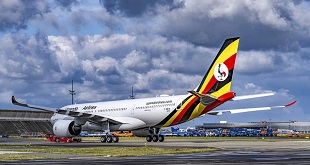
Valletta, Malta | Xinhua | Global oil demand is rising following an accelerated vaccination campaign and an economic recovery, pushing oil prices to two-and-a-half-year highs amid an output deficit.
Although an agreement for more output reached among the Organization of the Petroleum Exporting Countries (OPEC) and its allies on July 18 is expected to calm rising oil prices, concerns for a further climb in the coming months or longer remain, which would dampen a global recovery from the COVID-19 pandemic.
RISING OIL OUTPUT
OPEC together with non-OPEC countries, known as OPEC Plus, agreed to boost oil production by 400,000 barrels per day (bpd) each month from August until December this year as demand increases.
Last year, the OPEC cartel cut production by a record 10 million bpd amid a pandemic-induced decrease in demand and dropping prices. Countries including Iraq, Kuwait, Russia, Saudi Arabia and the United Arab Emirates would see their baseline production rise from May 2022. By then, total output quotas of OPEC Plus will be adjusted upward from the current 43.853 million bpd to 45.485 million bpd.
Oil market fundamentals have continuously strengthened with oil demand showing clear signs of improvement and the Organization for Economic Co-operation and Development stocks falling, as the economic recovery continued in most parts of the world with the help of accelerating vaccination programs, said OPEC.
Oil prices on July 19 plunged by more than 6 percent for both West Texas Intermediate (WTI) for August delivery on the New York Mercantile Exchange (NYMEX) and Brent crude for September delivery to below the level of 70 U.S. dollars per barrel.
Prior to the agreement, both crude oil spot prices and futures prices rose firmly in June amid higher oil demand from refiners and the transportation sector.
According to the latest monthly oil market report issued by OPEC on July 15, North Sea Dated averaged 72.96 dollars a barrel in June, while NYMEX WTI averaged 71.35 dollars a barrel for crude oil futures, with ICE Brent at 73.41 dollars a barrel.
FUTURE OIL PRICES WORRY
Although the OPEC Plus agreement has stabilized market speculation, market insiders remain mixed over future oil prices due to the uncertainties facing the global economy, particularly with the spread of the Delta variant.
Credit Suisse expects the average Brent crude price to settle at 70 dollars a barrel in 2021, up from a previous prediction of 66.5 dollars, and WTI crude at 67 dollars from 62 dollars.
“The oil market is still facing a supply deficit over the remainder of the year. This should limit the downside for oil prices,” said the London-based PVM Oil Associates in a research note.
“The market is clearly unsettled about the demand outlook. And rightly so. The rise in Delta variant cases is raising questions about the sustainability of demand,” said the note.
Even though some countries have lifted almost all restrictions, fresh constraints on economic activity are still possible if Delta becomes more rampant.
Phil Flynn, senior market analyst at the United States-based Price Futures Group, said OPEC’s deal should have supported oil yet more concerns are being raised about the Delta variant of the coronavirus. “It is now causing a risk-off situation that is weighing on global markets.”
UBS strategists said in a report that they “remain positive on oil” and maintain their forecast for Brent prices to rise to 80 dollars per barrel by the end of September. Global oil demand is now likely above 97 million bpd, up from a low of 78 million bpd in April 2020 and global demand is anticipated to exceed 99 million bpd this year.
According to OPEC’s monthly oil market report, global demand in 2021 is projected to increase by 6.0 million bpd to average 96.6 million bpd, and increase by 3.3 million bpd in 2022 to average 99.86 million bpd.
The International Energy Agency predicted in its July oil market report that global oil demand is expected to increase by 5.4 million bpd in 2021 and 3.0 million bpd in 2022, although escalating COVID-19 cases in a number of countries remain a key downside risk to the forecast.
Meanwhile, the agency said that crude oil balances are expected to be especially tight and warned that rising oil prices could “put a drag on the economic recovery, particularly in emerging and developing countries.”
******
Xinhua
 The Independent Uganda: You get the Truth we Pay the Price
The Independent Uganda: You get the Truth we Pay the Price



